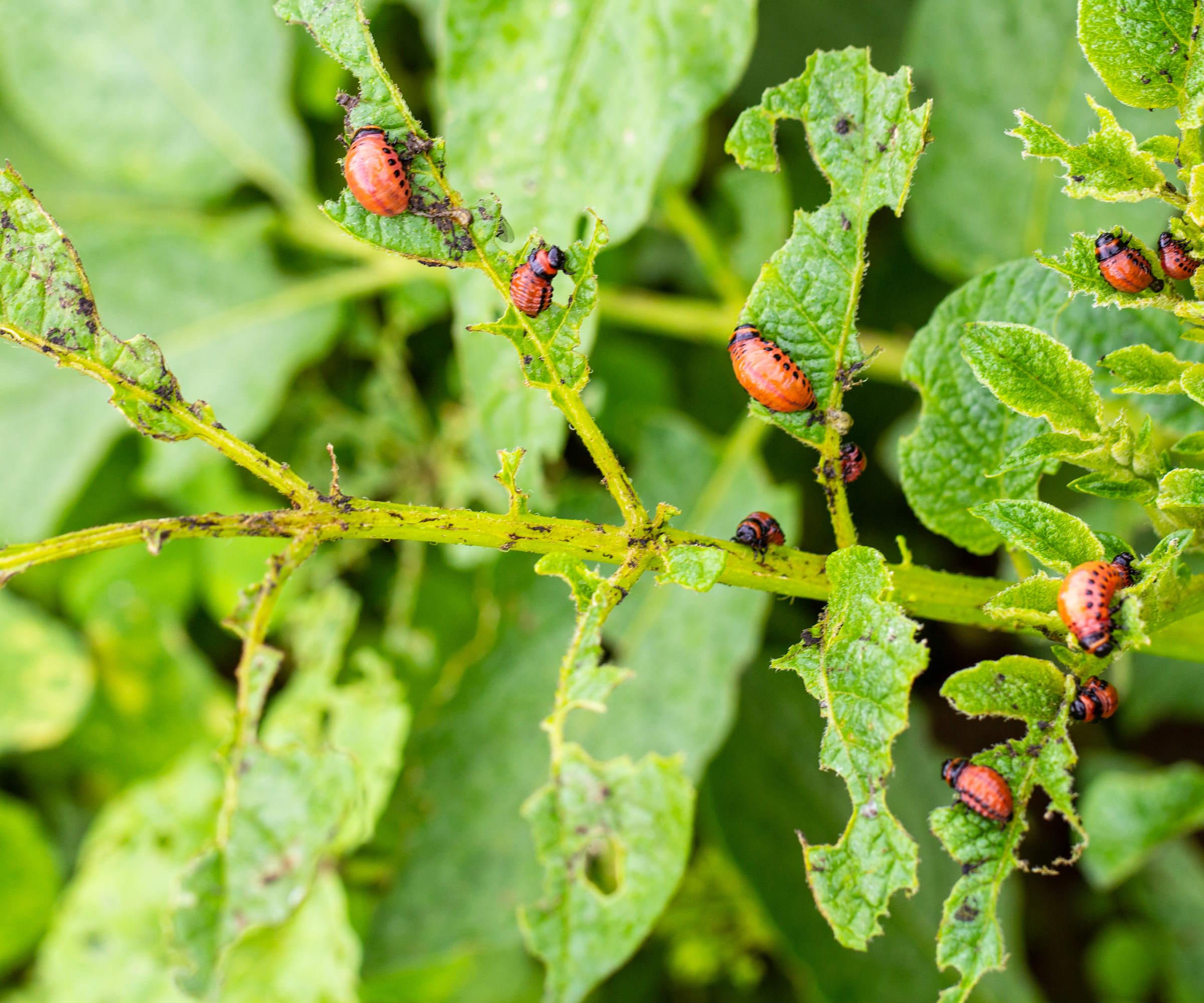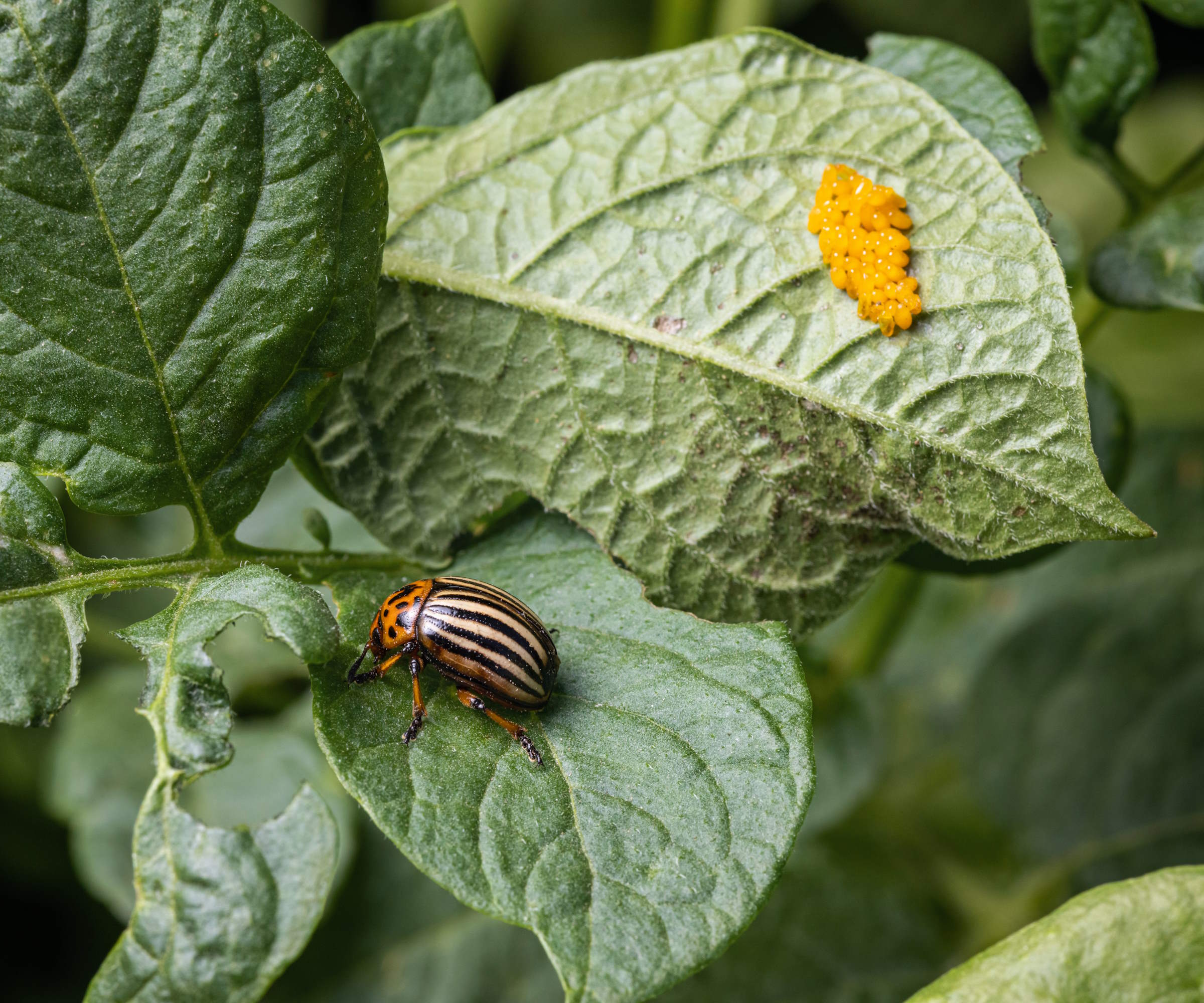
The notion of a vegetable garden pest that rapidly breeds, over-winters in the ground, and whose larvae can decimate plants sounds like a nightmare to any grower. However, that is a fairly accurate description of Colorado potato beetles.
Anyone who grows potatoes at home should know about Colorado potato beetles. These distinctive pests are found far and wide and they munch through crops. It is not only potatoes that they go for, as Colorado potato beetles can be attracted to other crops in the nightshade family.
I have grown potatoes for many years in the UK, professionally for chefs and on my home allotment. While I have not experienced Colorado potato beetles first-hand, the pests continue to spread globally. All potato growers should know the pests’ distinguishing characteristics and signs to look out for and learn how to get rid of Colorado potato beetles.

Where do you find Colorado potato beetles?
The name Colorado potato beetle comes from where the pests were first discovered. However, now these troublesome beetles can be found in vegetable gardens and farms far and wide. The bugs are believed to be prevalent in most US states and are found throughout Central America, Europe, and parts of Asia.
What are Colorado potato beetles?

Colorado potato beetles can be a real problem when growing potatoes. They are around a half-inch in size and identifiable by the orange-yellow and black stripes on their wings. The adults are hard-shelled and oval, while the larvae have a soft shell, red body, and a black head. The larvae also have two rows of dark dots on each side of their body.
The beetles lay their eggs on the underside of leaves in clusters of 20-40. Colorado potato beetle eggs are a bright yellow-orange color, oval in shape, and attached to the leaf at their end.
The life cycle of a Colorado potato beetle is a speedy one. Female Colorado potato beetles are capable of quickly laying over 500 eggs. These eggs hatch in under a week and the beetle can go from egg to adult in around three weeks. The speed of the Colorado potato beetle life cycle means up to three generations of pests can hatch each growing season.
Michelle Brugh, founder of Forks in the Dirt and co-author of Small-Scale Homesteading, describes them as ‘a perennial pest’ as they spend winters burrowed underground. They overwinter 4-12 inches deep in the ground of areas they fed on the previous season.
‘The next summer, they emerge and feed for a few weeks, before laying clumps of eggs on potato leaves,’ adds Michelle. ‘These hatch into heavy-feeding, brick-red, black-headed larvae. The larvae and striped orange and black adult beetles can truly decimate potato crops.’
It is not just potatoes that Colorado potato beetles can destroy. They also feed on other plants in the Solanaceae family, including eggplant, tomatillo, tomatoes, and peppers, and can rapidly damage crops.
The signs of Colorado potato beetle damage

Susan Mulvihill, author of The Vegetable Garden Pest Handbook and The Vegetable Garden Problem Solver Handbook, says that ‘both the adults and larvae cause a lot of chewing damage’ to host plants.
The harm from the larvae is the most severe, causing up to three-quarters of the damage, and this highlights why it is beneficial to control the young beetles.
‘The larvae chew on the plants’ foliage and leave dark frass on them,’ says Susan. Frass is the droppings left behind by the larvae and it will be evident on the plant and a sign of the presence of larvae.
Regular monitoring is key to spotting and combatting potato pests. The other main thing to keep an eye open for is the yellow or orange tubular Colorado potato beetle eggs on the undersides of the host plants’ leaves.
The plants can tolerate some defoliation, up to 20 per cent, but any more damage can affect the potato harvest. They are more sensitive to defoliation when the tubers are bulking up, which starts after the potato plants have started flowering.
Tips for Colorado potato beetle control

Close monitoring of plants every few days is vital to spot the damage right away and take prompt action. Start checking potato plants, as well as other host plants, in spring when Colorado potato beetles start to emerge.
‘Hand-picking is an excellent way to control them and crush any eggs you find,’ says Susan Mulvihill. Adult and larvae beetles can be picked off the plants and dropped into a container filled with soapy water.
Adults can fly in from other gardens once the temperatures reach around 70°F. It means crop rotation in a domestic vegetable garden cannot fully combat pests, however, the practise is still recommended to avoid soil-borne pests and diseases.
As for one way to protect a crop, Susan adds: ‘It is possible to cover potato plants with floating row cover for the entire growing season as their flowers do not require pollination.’
A good organic control for Colorado potato beetle is to incorporate companion planting into your vegetable garden. Adding flowers to a vegetable garden can deter many pests and attract Colorado potato beetle predators.
‘Marigolds (French or Lemon Gem) and nasturtiums can help deter these beetles,’ says Michelle Bruhn.
‘You can also help attract ladybugs, which eat the eggs, by planting flat-topped flowers, like dill and yarrow, and calendula.’
Susan Mulvihill advises how there are organic sprays that are effective against Colorado potato beetle, including kaolin clay, Neem oil, plant extracts and spinosad. She does warn: ‘Be aware that Neem and spinosad are toxic to pollinators so avoid spraying near flowers.’
Any treatments are best timed when the larvae are small. Due to continued chemical use over many decades, Colorado potato beetles have developed resistance to many insecticide products.
Shop flower seeds for companion planting
Hundreds of petite flowers cover neat, low mounds of lacy foliage with a citrusy scent that can deter pests in a vegetable garden.
'Sparky Mixture' is a familiar alternative to the traditional marigold, quickly maturing to 12 to 14 inches tall boasting unique semi-doubled heads.
A packet of heirloom 'Bouquet' dill seeds that produce 3ft plants with strongly aromatic foliage, stems, and flat-topped flower heads.
FAQs
What is the natural enemy of the Colorado potato beetle?
Lady bugs, stink bugs, ground beetles, lacewings, spiders, mites, and parasitic wasps are all predators of Colorado potato beetles. These are all thought to target the eggs and young larvae of the pest, while birds, frogs, and toads will eat the beetle, larvae, and eggs. Companion planting with flowers to bring in insects, adding plants for birds, and attracting frogs with water sources are all ways to bring in predators as part of natural pest control.
As mentioned, Colorado potato beetles can also cause problems if you are growing tomatoes - they are one of many pests that can trouble tomato growers. To find out more and discover ways to combat them organically see our dedicated article on tomato pests, complete with expert tips to deal with outbreaks.







